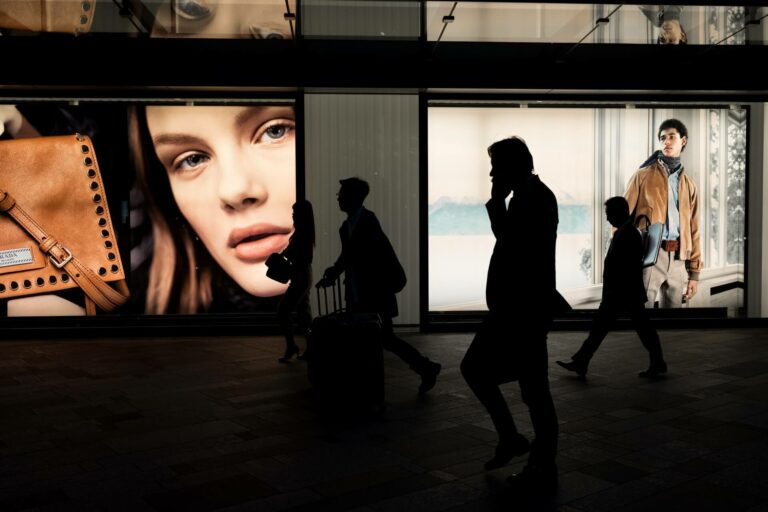Digital Signage Best Practices: Think Out-Of-The-Box with Dynamic Content

So far, we have discussed the placement and the design of digital content. However, what really makes digital signage different from traditional signage is its technology. It allows for signage to be easily updated and become dynamic. This makes the content more engaging, eye-catching, and more likely to influence your audience to make a purchase decision. A Nielsen study tracked 120 grocery stores that use digital signage in their stores. The study found 80% of them saw as much as a 33% boost in sales (compared to using print signs.)
We’ll talk about the different elements you can use within your digital signage to make your screens and projections come to life. And even more, to capture your audience’s attention.
Sounds can enhance the customer experience
Sounds can be used as an added element of digital signage, making it a more engaging experience. However, you should also be aware that sound might be hard to hear or turned off completely in certain locations. In this case, always rely on on-screen text to deliver your information, while using sound to add to the experience.
A good example of using sound to enhance the digital signage experience is using holiday music. This can build up the holiday spirit and bring more awareness to information and sales on the screen. A recent study found that 18% of people agreed that hearing Christmas music encouraged them to buy more gifts.
If you’re looking to use sound along with your digital signage, remember:
- Don’t rely on sound. Always use on-screen text to get across key information.
- Don’t play music too loudly. It can be distracting and overwhelming for customers.
- Sounds should make sense in the context of your digital signage. For example, if your signage is relaxing and ocean-themed, it wouldn’t make sense to have loud rock music.
- Don’t be repetitive. Much like digital signage, mix it up as much as possible so customers don’t see and hear the same thing over and over.
Using images and videos in digital signage
A key part of digital signage is movement. That’s what makes it superior to traditional signage. You don’t need to use static images within your digital signage screens. Changing the images and videos helps to catch your audience’s eye. This is especially true if your audience is going to walk past your signage, instead of sitting looking at it. You want something that will attract attention and make people pause to read or watch your digital signage.
Also, remember that images don’t need to be a 16:9 rectangle, you can think outside the box and get creative. Projected graphics can be placed anywhere with a clear wall or floor space and are not restricted by screen size or shape. Using projected video for sales, product information, or directions within stores. Wovenmedia is at the forefront of digital signage projection.
Video is a powerful tool within digital signage. It gives the ability to get across large amounts of information through video storytelling. Video marketing is the future and in 2022 there are hundreds of different ways to harness them. Check out our blog post on video marketing to find out more.
Keep your content and message fresh
Digital signage should do four main things:
- Inspire
- Inform
- Engage
- Entertain
Good digital signage will do at least three if not all. But you don’t need to rely on one piece of content within your digital signage to do it. Cycle through various content during the day. Within an office, alternate between the latest company news (inform) and social media posts where the company has been tagged in (engage). You could also share business and employee achievements (inspire). Not only does this make your digital signage more interesting and enjoyable, but employees feel valued.
Within retail, mix up sales and product information with entertaining videos or social media posts. This way customers don’t feel like you’re making the hard sales push at all times. Switching through content also adds movement to your screens, which keeps them from feeling stale.
Final thoughts
Considering context, design, and movement will get your team ready to create informative and engaging digital signage.
Considering context, design, and movement will get your team ready to create informative and engaging digital signage. The most important thing to take away is to be creative. Think outside the box and put yourself in the shoes of your audience and consider, is this working? If not, why not and what can you do to make this experience better.
If you would like to know more about digital signage and how you can create dynamic digital content for your location, talk to our team of experts today.






